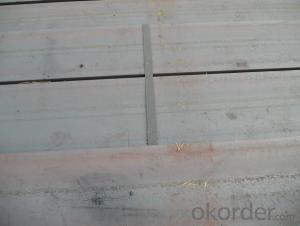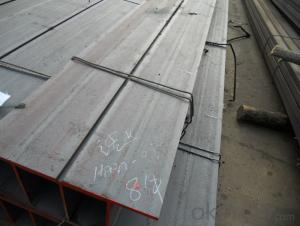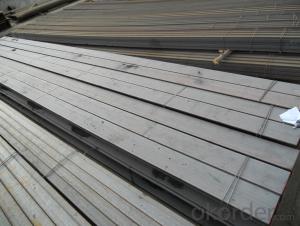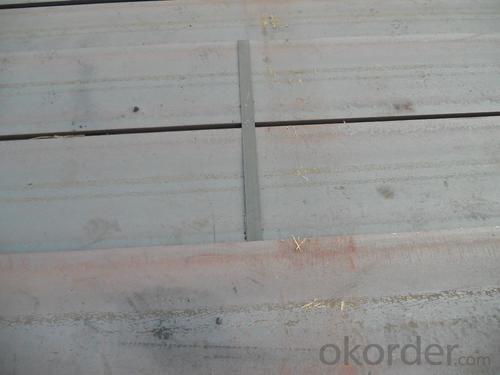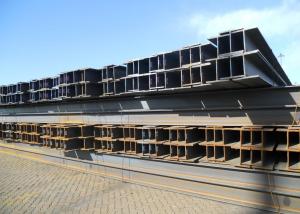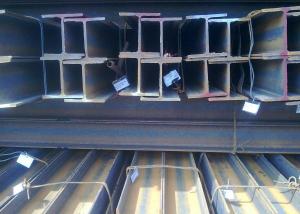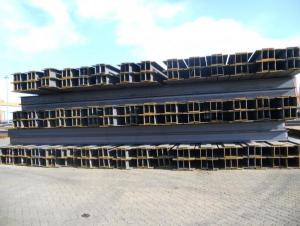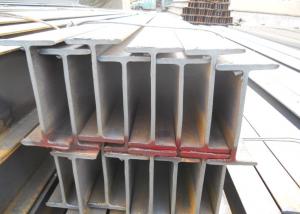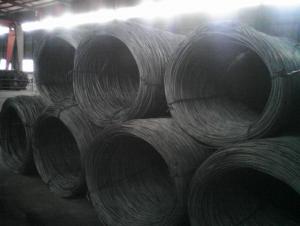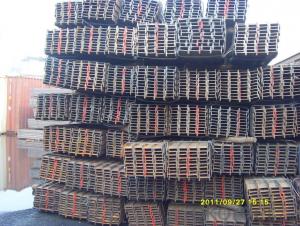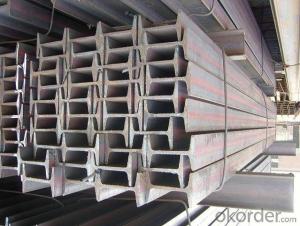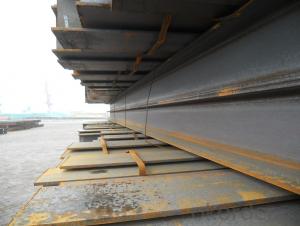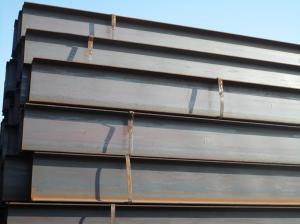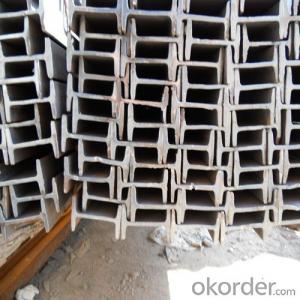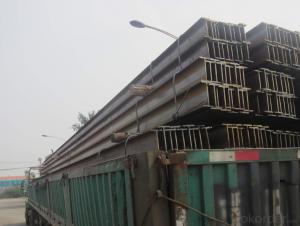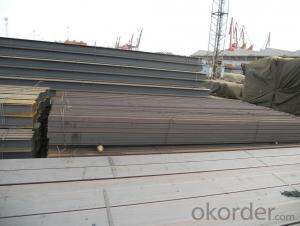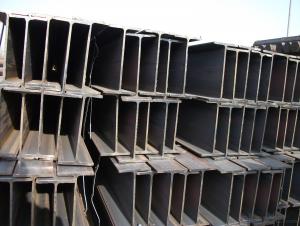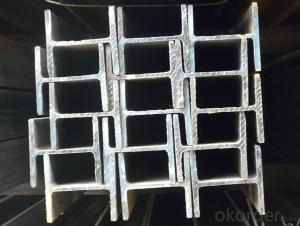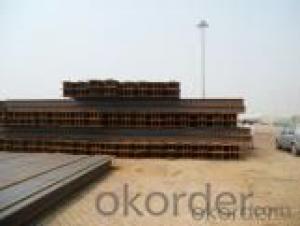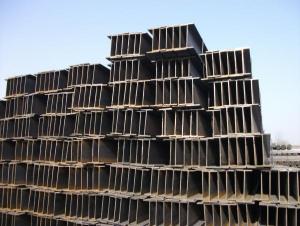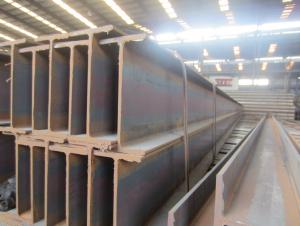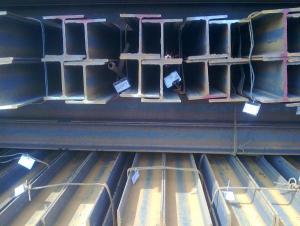Hot Rolled JIS Standard Steel H Beam Structure
- Loading Port:
- China Main Port
- Payment Terms:
- TT or LC
- Min Order Qty:
- -
- Supply Capability:
- -
OKorder Service Pledge
OKorder Financial Service
You Might Also Like
Product Description:
OKorder is offering high quality Hot Rolled Steel I-Beams at great prices with worldwide shipping. Our supplier is a world-class manufacturer of steel, with our products utilized the world over. OKorder annually supplies products to European, North American and Asian markets. We provide quotations within 24 hours of receiving an inquiry and guarantee competitive prices.
Product Applications:
Hot Rolled Steel I-Beams are ideal for structural applications and are widely used in the construction of buildings and bridges, and the manufacturing, petrochemical, and transportation industries.
Product Advantages:
OKorder's Steel I-Beams are durable, strong, and resist corrosion.
Main Product Features:
· Premium quality
· Prompt delivery & seaworthy packing (30 days after receiving deposit)
· Corrosion resistance
· Can be recycled and reused
· Mill test certification
· Professional Service
· Competitive pricing
Product Specifications:
Manufacture: Hot rolled
Grade: Q195 – 235
Certificates: ISO, SGS, BV, CIQ
Length: 6m – 12m, as per customer request
Packaging: Export packing, nude packing, bundled
SIZE(mm) | DIMENSION(kg/m) |
100*100 | 16.9 |
125*125 | 23.6 |
150*75 | 14 |
150*150 | 31.1 |
148*100 | 20.7 |
198*99 | 17.8 |
200*100 | 20.9 |
248*124 | 25.1 |
250*125 | 29 |
Packaging & Delivery of Hot Rolled Structural Steel H Beam
1. Packing: it is nude packed in bundles by steel wire rod
2. Bundle weight: not more than 3.5MT for bulk vessel; less than 3 MT for container load
3. Marks:
Color marking: There will be color marking on both end of the bundle for the cargo delivered by bulk vessel. That makes it easily to distinguish at the destination port.
Tag mark: there will be tag mark tied up on the bundles. The information usually including supplier logo and name, product name, made in China, shipping marks and other information request by the customer.
If loading by container the marking is not needed, but we will prepare it as customer request.
4. Transportation: the goods are delivered by truck from mill to loading port, the maximum quantity can be loaded is around 40MTs by each truck. If the order quantity cannot reach the full truck loaded, the transportation cost per ton will be little higher than full load.
5. Delivered by container or bulk vessel
FAQ:
Q1: Why buy Materials & Equipment from OKorder.com?
A1: All products offered byOKorder.com are carefully selected from China's most reliable manufacturing enterprises. Through its ISO certifications, OKorder.com adheres to the highest standards and a commitment to supply chain safety and customer satisfaction.
Q2: How do we guarantee the quality of our products?
A2: We have established an advanced quality management system which conducts strict quality tests at every step, from raw materials to the final product. At the same time, we provide extensive follow-up service assurances as required.
Q3: How soon can we receive the product after purchase?
A3: Within three days of placing an order, we will begin production. The specific shipping date is dependent upon international and government factors, but is typically 7 to 10 workdays.
Q4: What makes stainless steel stainless?
A4: Stainless steel must contain at least 10.5 % chromium. It is this element that reacts with the oxygen in the air to form a complex chrome-oxide surface layer that is invisible but strong enough to prevent further oxygen from "staining" (rusting) the surface. Higher levels of chromium and the addition of other alloying elements such as nickel and molybdenum enhance this surface layer and improve the corrosion resistance of the stainless material.
Q5: Can stainless steel rust?
A5: Stainless does not "rust" as you think of regular steel rusting with a red oxide on the surface that flakes off. If you see red rust it is probably due to some iron particles that have contaminated the surface of the stainless steel and it is these iron particles that are rusting. Look at the source of the rusting and see if you can remove it from the surface.
Images:
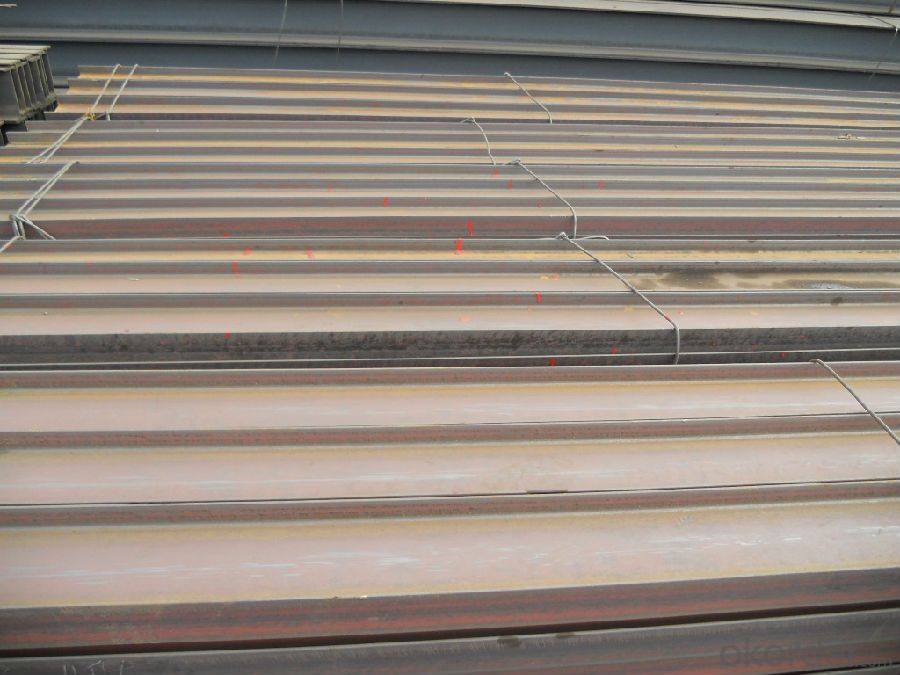
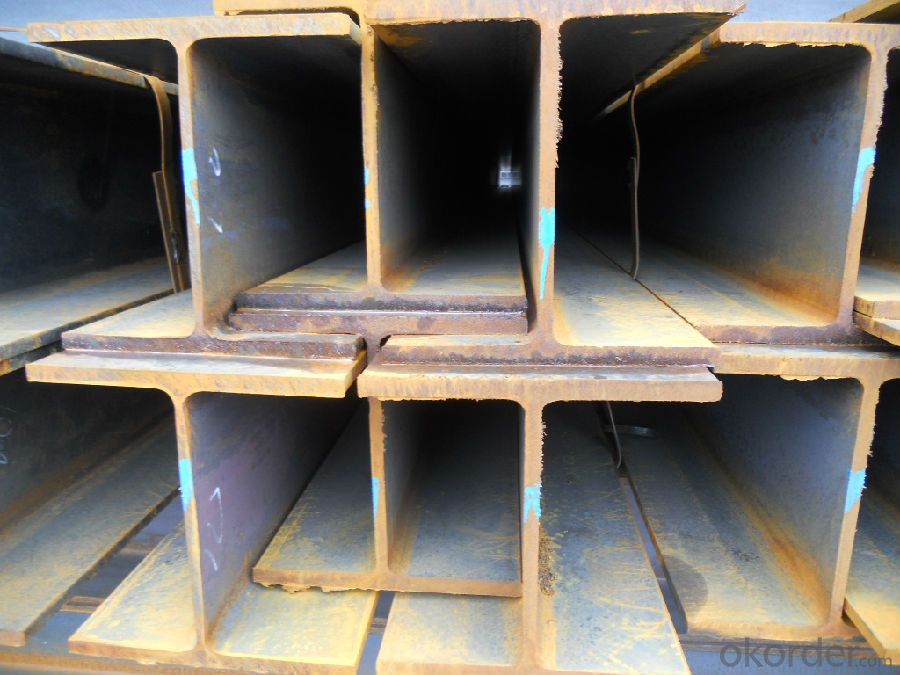
- Q: What are the different sizes and dimensions available for steel H-beams?
- Steel H-beams are available in a wide range of sizes and dimensions to suit various construction and engineering applications. The specific sizes and dimensions of steel H-beams can vary depending on the manufacturer and the specific requirements of the project. Typically, steel H-beams are characterized by their depth, width, and weight per unit length. The depth of the H-beam refers to the height of the beam's web, while the width refers to the flange width. The weight per unit length indicates the weight of the beam per unit length, usually measured in pounds per foot or kilograms per meter. Common sizes and dimensions for steel H-beams include those with a depth ranging from 4 inches to 36 inches and a width ranging from 5 inches to 12 inches. However, larger and smaller sizes are also available, depending on the manufacturer. The weight per unit length of steel H-beams can vary significantly, depending on the size and grade of the beam. For example, a 10-inch by 6-inch steel H-beam may weigh around 15 pounds per foot, while a 12-inch by 12-inch H-beam can weigh as much as 90 pounds per foot. It is important to note that the availability of specific sizes and dimensions may vary based on the market and the manufacturer. Some manufacturers may offer custom sizes and dimensions to meet the unique requirements of a project. Consulting with a structural engineer or contacting steel suppliers can provide more precise information on the available sizes and dimensions of steel H-beams.
- Q: How do steel H-beams perform in terms of buckling resistance?
- Steel H-beams are known for their excellent buckling resistance. The H-shape provides a high moment of inertia, which means that the beam is less likely to buckle under compressive loads. The flanges of the H-beam help distribute the load evenly, reducing the risk of localized buckling. Additionally, the vertical web of the H-beam provides additional stiffness, further enhancing its resistance to buckling. Overall, steel H-beams are considered to be one of the most robust and reliable structural members, making them highly suitable for applications where buckling resistance is crucial.
- Q: Can steel H-beams be used for pedestrian bridges over highways?
- Yes, steel H-beams can be used for pedestrian bridges over highways. Steel H-beams are commonly used in bridge construction due to their high strength-to-weight ratio and structural stability. They can withstand heavy loads, making them suitable for supporting pedestrian traffic over highways. Additionally, steel H-beams can be prefabricated and easily transported to the construction site, allowing for efficient and cost-effective bridge construction. Proper design and engineering considerations must be made to ensure the bridge meets all safety standards and requirements.
- Q: Are steel H-beams suitable for residential extensions?
- Yes, steel H-beams are commonly used in residential extensions due to their structural strength and versatility. They provide excellent support for increased load-bearing requirements, allowing for larger open floor plans and the ability to add additional levels to existing structures. Additionally, steel H-beams are durable, long-lasting, and can be easily incorporated into various architectural designs.
- Q: How do steel H-beams compare to timber beams?
- Steel H-beams are generally stronger, more durable, and have a higher load-bearing capacity compared to timber beams. Additionally, steel beams are fire-resistant and less susceptible to rot, pests, and warping, making them a preferred choice for heavy construction and structural applications. However, timber beams are often more cost-effective, easier to work with, and can provide a more aesthetic appeal in certain architectural designs. Ultimately, the choice between steel H-beams and timber beams depends on the specific needs, budget, and design preferences of the project.
- Q: Are Steel H-Beams prone to corrosion or rust?
- Steel H-beams are not usually prone to corrosion or rust due to their composition. H-beams are typically made from carbon steel, which has a high resistance to corrosion. This is because carbon steel contains a high amount of iron and a small percentage of carbon, making it a durable material. Furthermore, H-beams are often coated with protective layers like zinc to enhance their resistance to corrosion. These coatings create a barrier that prevents moisture and oxygen from directly contacting the steel. Consequently, the likelihood of corrosion or rust developing on steel H-beams is minimal. However, it is important to note that if the protective coating becomes damaged or worn over time, the underlying steel may become susceptible to corrosion. Therefore, it is recommended to regularly inspect and maintain H-beams to ensure their long-term durability and resistance to rust.
- Q: Can steel H-beams be used in marine or coastal environments?
- Yes, steel H-beams can be used in marine or coastal environments. However, it is important to consider the potential challenges posed by corrosion due to saltwater exposure. Proper protective coatings or materials like stainless steel should be used to prevent corrosion and ensure the longevity of the H-beams in such environments. Regular maintenance and inspections are also crucial to identify any signs of corrosion and address them promptly.
- Q: What are the different types of connections used for steel H-beams?
- Different types of connections are utilized for steel H-beams, based on the particular application and load demands. 1. Welded Connections: Steel H-beams are commonly joined through welding, which involves melting the steel at the joint and merging it. These connections offer high strength and rigidity, making them suitable for heavy loads and structural purposes. 2. Bolted Connections: Bolts and nuts are used to secure H-beams, providing flexibility for disassembly and reassembly when necessary. This connection type is often employed in situations where easy installation and maintenance are important. 3. Riveted Connections: Although an older method, riveting can still be found in some older structures. It involves inserting metal pins, known as rivets, through pre-drilled holes and compressing them to create a permanent connection. 4. Moment Connections: When significant bending moments need to be transferred between H-beams, moment connections are used. These connections enhance rigidity and stability by resisting rotational forces, commonly found in building frames and structures experiencing heavy loads or seismic activity. 5. Shear Connections: Shear connections are designed to transfer shear forces between H-beams. This typically involves welding or bolting steel plates or angles to the webs and flanges of the H-beams, enhancing their load-bearing capabilities. 6. Pinned Connections: Pinned connections allow for rotation at the joint and are used in situations where flexibility and movement are required. These connections typically involve using pins or bolts to connect H-beams, allowing them to pivot or rotate. It is essential to consider factors such as load requirements, structural design, and specific application when selecting the appropriate connection type. Consulting a structural engineer or adhering to relevant building codes and standards is crucial when determining the most suitable connection type for steel H-beams in a given scenario.
- Q: H Elastic modulus of section steel
- The general definition of modulus of elasticity is that stress is divided by strain. When the material is in the elastic deformation stage, its stress and strain should be changed into a positive proportion (that is to say, according to Hooke's law), and the coefficient of proportionality is called the elastic modulus.
- Q: Can Steel H-Beams be used for supporting heavy machinery or equipment?
- Yes, Steel H-Beams can be used for supporting heavy machinery or equipment. H-Beams are known for their strength and structural integrity, making them suitable for carrying heavy loads. Their wide flanges and shape provide excellent support and stability, making them a popular choice in construction and industrial applications.
Send your message to us
Hot Rolled JIS Standard Steel H Beam Structure
- Loading Port:
- China Main Port
- Payment Terms:
- TT or LC
- Min Order Qty:
- -
- Supply Capability:
- -
OKorder Service Pledge
OKorder Financial Service
Similar products
Hot products
Hot Searches
Related keywords
